
The capital Windhoek is located inland in the middle of the country. Swakopmund on the Atlantic coast and the harbour town of Walvis Bay close by are both nice little towns.
Size: An area of 824.290sq.km makes Namibia slightly bigger than Scandinavia. The population density is about the lowest in the world at around 2.7 persons per sq.km.
Climate: Namibia has low rainfall, some places less than 100 ml per annum while other areas can have 500ml per annum. The summer from September to April can be very hot. The winter from May till August being dry and mild is a better time for travelling to Namibia.
Currency: The local currency is the Namibian dollar- NAD. South African Rand is also welcome. You find ATMs only in bigger places; credit cards are fairly widely accepted however always have cash.
Official languages: English and German
Visa: Tourist visas are free for Scandinavians and obtained at port of entry. For other nationalities, please check with embassy/consulate.
Vaccinations: None required but please note, this can change, check with health institutions for updated information.
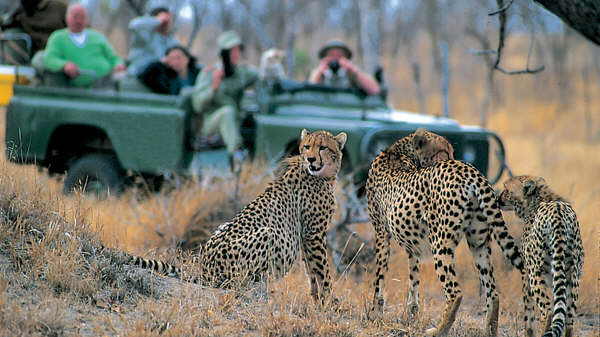
The main capital is Pretoria, situated in the northern part of the country. Other well-known cities are Johannesburg, close to Pretoria, Cape Town in the south on the Atlantic coast and Durban on the Pacific Ocean coast in the east.
Size: An area of 1.219, 090sq.km makes South Africa the 25th largest country in the world. Bigger than France and Spain put together. About 53 million inhabitants gives a population density of 43, 6 persons per sq. km.
Climate: South Africa has several climatic zones and the inland part of the country is dominated by a central high plateau that varies from 1000 to 2000 meters above sea level. Rainfall varies with seasons; in the Western Cape the winters have rain and the summers are dry while further north there is summer rain and the winters are dry. The Durban area, being subtropical, has summer and winter rain, while the Eastern Cape have summer rain. Winters are mostly pleasant but can be from chilly to cold; the summers will in some places be quite or very hot.
Currency: The local currency is the South African Rand – ZAR. You will find ATMs in most places and the use of credit cards is wide spread. Do however always carry some cash, just in case.
Official languages are: English, Afrikaans, Zulu, Sotho, Xhosa, Tswana, Venda, Swati and Ndebele.
Visa: Most nationalities get their tourist visas free of charge at the port of entry. Please check with the nearest embassy or consulate.
Vaccinations: None required but please note, this can change, please check with health institutions for updated information and for information about precautions against Malaria.
Destination South africa
The capital Gaborone is situated in the south, close to the South African border.
Size: Botswana covers 581.730sq.km which makes it about the same size as Ukraine, or double the size of Norway. A population of about 2.1 million gives a density of 3, 5 persons per sq.km.
Climate: The summer is from September till April and winter from May till August. Summers can get quite hot with rain; the winter is usually dry with cold evenings. For the Okavango Delta the best time to go is from July and onwards as there should then be good amounts of water. Please note however, that water level varies with rainfall.
Currency: The local currency is the Botswana Pula – BWP. Most tourist operations will also accept South African Rand, Euro, USD and British Pounds and they will have credit card facilities. ATMs are not common so please also carry some small bills of USD and some in local currency.
Official languages: English and Setswana.
Visa: Some nationalities get their tourist visas free of charge at the port of entry. Others have to apply before travelling, please check with the embassy or consulate.
Vaccinations: None required but please note, this can change, please check with health institutions for updated information and for information about precautions against Malaria.
Destination Botswana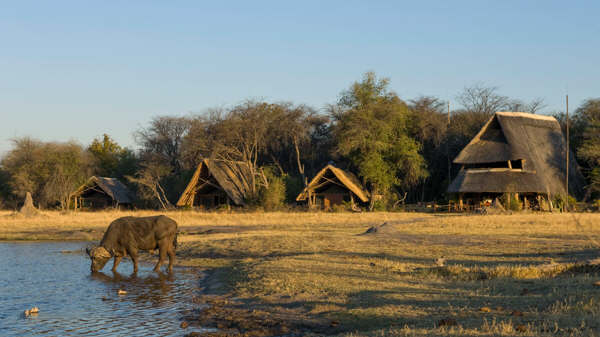
The capital is Harare, located more or less in the centre of the country.
Size: Zimbabwe covers 390.760sq.km, thus making it two times bigger than the United Kingdom. A population of about 14 million gives a density of 36,5 persons per sq.km.
Climate: The country has a tropical climate however moderated by altitude; Harare is at 1,483 meters above sea level. The summers from November till March are from warm to hot with rain. The best travelling time is during the winter, from March/April till November.
Currency: The local currency is for the main part abandoned and replaced by USD. The monetary situation is complicated but hotels and tourist centres will accept credit cards. ATMs exist in tourist centres but might not have any money to give. Bring USD dollars in cash, small denominations.
Official languages: English, Shona and IsiNdebele.
Visa: Some nationalities get their tourist visas, for a fee of approximately USD 50, at the port of entry. And some have to apply before travelling, please check with the embassy or consulate.
Vaccinations: None required but please note, this can change, check with health institutions for updated information and for information about precautions against Malaria.
Destination Zimbabwe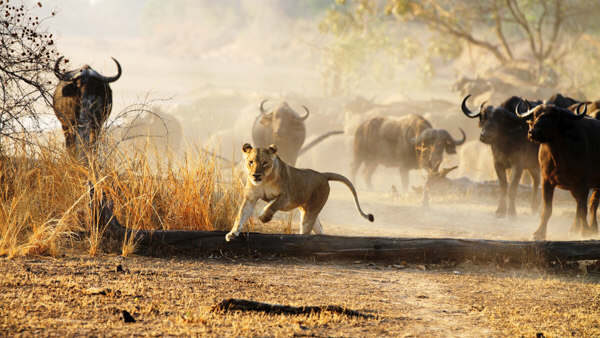
The capital Lusaka is located north of Victoria Falls.
Size: Zambia covers an area of about 752.614sq.km, which makes it about the same size as Mozambique. A population of about 13 million gives a density of 19, 5 persons per sq.km.
Climate: Because of its high altitude, Lusaka for example is on 1,277 meter above sea level; Zambia has a modified tropical climate and can boast 4 seasons: chilly winter from Mai till July, mild spring from August till September, dry and hot summer from October till November and wet and warm summer from November till March. The best time to travel is outside of the wet season.
Currency: The local currency is the Kwacha – ZMK. USD as well as credit cards will be accepted at larger tourist centres, but it is recommended always to carry some cash in local currency. You will find ATMs only in tourist areas.
Official language: English.
Visa: Some nationalities get their tourist visas for a fee of about 50 USD at the port of entry. Others have to apply before travelling, please check with the embassy or consulate.
Vaccinations: None required but please note, this can change, please check with health institutions for updated information and for information about precautions against Malaria.
Destination Zambia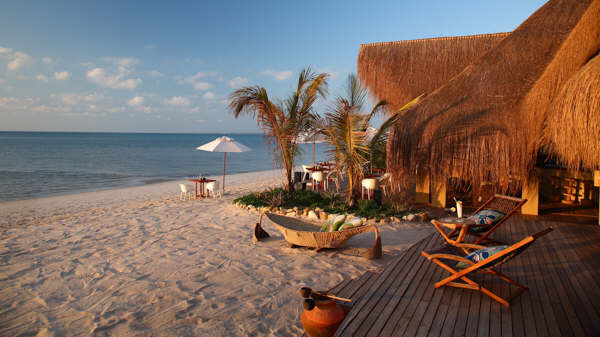
The capital Maputo is on the coast in the southern part of the country.
Size: Mozambique covers an area of about 801.590sq.km, which is more or less the size of Turkey. A population of about 25 million gives a density of 28.7 persons per sq.km.
Climate: The climate is warm tropical and the summers from September to April are from warm to very hot with rain. The winter from May till August is pleasantly dry and mild.
Currency: The local currency is Metical – MZN. USD and South African Rand as well as credit cards will be accepted at most tourist centres. ATMs are not widespread and always having some cash is a good idea.
Official language: Portuguese.
Visa: Tourist visas can, for some nationalities, be obtained (USD) at the port of entry, however this is a very time consuming process. It is recommended to get a visa ahead of travelling, contact embassy or consulate for advice.
Vaccinations: None required but please note, this can change, please check with health institutions for updated information and for information about precautions against Malaria.
Destination Mozambique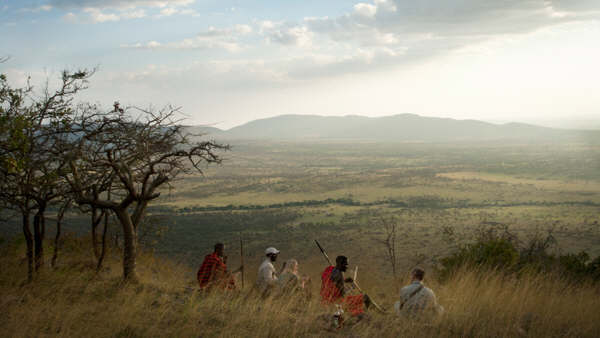
The capital Dodoma is inland in the middle of the country. More known cities are Daar Es Salaam on the coast and Arusha in the north towards Serengeti.
Size: The country covers an area of about 947,300sq.km, which makes it the biggest country in East Africa and a bit bigger than France and Italy put together. A population of around 55 million gives a density of 55,6 persons per sq.km.
Climate: The climate varies with altitude, in low-lying areas it is tropically hot and humid while at higher altitudes it will be less hot and sometimes cool and nights can be chilly. Summer is from September to April and winter from May till August. The best time for travelling is from June till August and January and February, however, Tanzania is more or less an all year destination.
Currency: The local currency is the Tanzanian Shilling –TZS. USD and credit cards will be accepted in most tourist destinations however it is recommended to always have some cash in local currency. ATMs are not common however may be encountered in tourism centres.
Official languages: Kiswahili and English.
Visa: Tourist visas can for most nationalities be obtained at the port of entry at the price of about USD 50, and note, at USD 100 for US citizens.
Vaccinations: None required but please note, this can change, please check with health institutions for updated information and for information about precautions against Malaria.
Yellow Fever and Hepatitis: vaccination is sometimes required and sometimes not. It is however recommended to get vaccinated as both Yellow Fever and Hepatitis can occur from time to time.
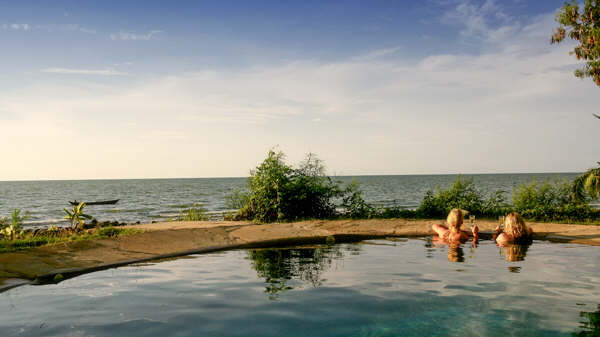
The capital Nairobi is located in the south east towards the border with Tanzania whereas Mombasa is located on the Indian coast.
Size: The country covers an area of about 580,309sq.km, which is about the size of Botswana and a bit bigger than California. A population of around 45 million give a density of 78 persons per sq.km.
Climate: Kenya lies on the equator and has a pleasant tropical climate however with large regional variations due to altitude and other factors. Temperatures drop about 6 degrees C per 1000 meter; Nairobi is at 1.795 meters above sea level. The coast is hot and humid all year, sometimes tempered by the monsoon winds. The Savannah in the area of Nairobi is cooler, while other parts of the interior towards Somalia and Ethiopia are warm and dry with desert like conditions. There are two seasons, wet and dry. The dry season is from June to October and the wet season from November to May. The best time of travelling is in the dry season and possibly from December till March.
Currency: The local currency is the Kenyan Shilling –KES. USD and credit cards will be accepted in most tourist destinations however it is recommended to always have some cash in local currency. ATMs are not common however may be encountered in tourism centres.
Official languages: Swahili and English.
Visa: Tourist visas can for most nationalities be obtained at the port of entry at the price of about USD 50, however regulations may change, please contact the embassy or consulate before travelling.
Vaccinations: None required but please note, this can change, please check with health institutions for updated information and for information about precautions against Malaria.
Yellow Fever and Hepatitis: vaccination is sometimes required and sometimes not. It is however recommended to get vaccinated as both Yellow Fever and Hepatitis can occur from time to time.
We do not have scheduled departures; all our holidays and tours are tailor-made and unique productions. Please send us an email if you want us to send you suggestions and price estimates. In the meantime have a look at the suggested programs for the various destinations.
travel@safarishop.cc
Photo Credits:
Artogrtaphy - African Sun - Aha Hotels and Lodges - Azura Retreats - Blyde Adventure - Desert and Delta - Day Trippers - Governors Camps - Kambaku Safari Lodge - Legend Lodges - Morgan Bay Hotel - Nomad Tanzania - Norman Carr Safaris - Okonjima/AfriCat - Prana Lodge - Sense of Africa - Sanctuary Retreats - Shindzela Bush Camp - Tsogo Sun - Welcome Tourism Services - Wilderness Safaris - Wild Horizons